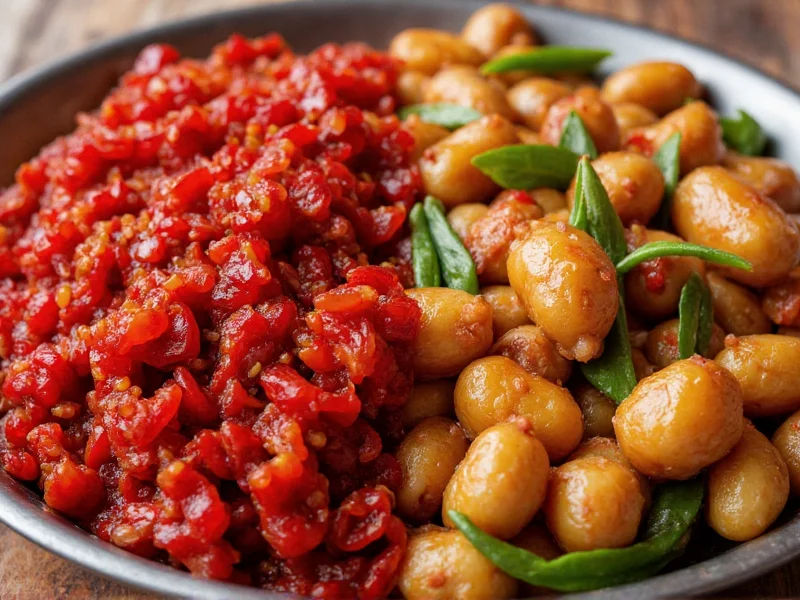Chinese regional cuisines offer diverse flavor experiences that often confuse diners unfamiliar with their distinct characteristics. When comparing Hunan vs Szechuan taste profiles, understanding their fundamental differences helps navigate menus and appreciate each culinary tradition's unique approach to spice and flavor.
Understanding Hunan Cuisine's Flavor Identity
Hunan cuisine, also known as Xiang cuisine, originates from China's Hunan province in the south-central region. This culinary tradition developed in a humid climate where spicy foods help combat moisture and preserve ingredients. Hunan cooking emphasizes fresh heat primarily from abundant use of fresh red and green chili peppers rather than dried varieties. The heat hits directly without the numbing quality found in Szechuan dishes.
What truly distinguishes Hunan flavor is its balanced sourness—typically from vinegar—which cuts through the intense heat. This sour-spicy combination creates a refreshing quality despite the high spice levels. Hunan chefs frequently incorporate smoked and cured ingredients, giving many dishes a distinctive depth. The resulting plates often appear darker with oilier finishes compared to other Chinese regional cuisines.
Szechuan Cuisine: The Art of Mala Flavor
Szechuan (more accurately spelled Sichuan) cuisine hails from China's Sichuan province in the southwest. Its most famous contribution to global food culture is the mala sensation—a unique mouthfeel combining ma (numbing) from Sichuan peppercorns and la (spicy) from chilies. This distinctive characteristic sets Szechuan cooking apart from all other Chinese regional styles.
Szechuan peppercorns contain hydroxy-alpha sanshool, a compound that creates a tingling, vibrating sensation on the tongue and lips. When combined with dried red chilies, this creates a complex sensory experience where the numbing effect actually enhances the perception of other flavors. Szechuan dishes often feature layered flavor profiles incorporating sweet, sour, salty, and umami elements alongside the signature mala heat.
| Characteristic | Hunan Cuisine | Szechuan Cuisine |
|---|---|---|
| Primary Heat Source | Fresh chili peppers | Dried chilies + Sichuan peppercorns |
| Signature Sensation | Direct, intense heat | Numbing-spicy (mala) |
| Flavor Balance | Hot and sour dominant | Complex sweet-sour-spicy balance |
| Common Ingredients | Fresh chilies, vinegar, smoked meats | Dried chilies, Sichuan peppercorns, doubanjiang |
| Visual Appearance | Darker, oilier dishes | Bright red from chili oil |
| Texture Profile | Often crisp-tender vegetables | Variety including tender meats and crunchy elements |
Comparing Heat Levels and Flavor Complexity
When examining Hunan vs Szechuan taste profiles, the most immediate difference lies in their approach to heat. Hunan cuisine delivers straightforward, penetrating heat that builds steadily. The fresh chilies used in Hunan cooking provide a cleaner, more vegetal heat that doesn't overwhelm other flavors. This makes Hunan dishes particularly appealing to those who enjoy pure spiciness without additional sensory elements.
Szechuan cuisine, by contrast, creates a multi-dimensional heat experience. The Sichuan peppercorns don't just add flavor—they alter your perception of taste. This numbing quality actually enhances the complexity of other ingredients, allowing Szechuan chefs to build intricate flavor profiles that evolve as you eat. The famous doubanjiang (fermented broad bean paste) adds umami depth that balances the intense spice elements.
Signature Dishes That Define Each Cuisine
Hunan's culinary showcase includes Steamed Fish Head with Chopped Chili (Dòujiāo zhēng yútóu), where fresh red chilies create vibrant heat against tender fish. Another classic, Hunan Smoked Pork (Xūn là ròu), demonstrates the region's love for preserved ingredients with chilies and vinegar cutting through the rich, smoky flavors.
Szechuan's most famous export, Kung Pao Chicken (Gōngbǎo jīdīng), perfectly illustrates the mala principle with its combination of dried chilies, Sichuan peppercorns, and peanuts creating contrasting textures. Mapo Tofu, perhaps the quintessential Szechuan dish, features soft tofu in a fiery, numbing sauce that exemplifies the cuisine's complex layering of flavors.
How to Identify Each Style When Dining
When exploring Chinese restaurants, certain visual and sensory cues help distinguish Hunan vs Szechuan dishes. Hunan plates typically feature bright red fresh chilies visible in the dish, with darker sauces and noticeable vinegar aroma. The heat builds gradually but remains consistent throughout the meal.
Szechuan dishes often show smaller dried red chilies and sometimes visible Sichuan peppercorns. The distinctive numbing sensation begins within minutes of eating and creates that signature tingling feeling. The sauce tends to be redder from chili oil rather than the darker appearance of Hunan preparations.
Choosing Based on Personal Preference
Your preference between Hunan and Szechuan cuisine largely depends on how you experience spice. If you enjoy direct, clean heat that showcases the natural flavor of chilies with complementary sour notes, Hunan cuisine will likely appeal to you more. It's ideal for those who want spice as the primary flavor element without additional sensory components.
If you appreciate complex flavor journeys where spice interacts with other taste elements in surprising ways, Szechuan cuisine offers a more nuanced experience. The mala sensation creates a unique eating experience where flavors seem to evolve and intensify as the numbing effect takes hold. This makes Szechuan particularly appealing to adventurous eaters who enjoy multi-sensory dining experiences.
Common Misconceptions Clarified
Many Western restaurants conflate Hunan and Szechuan styles, often labeling any spicy Chinese dish as 'Szechuan.' True Hunan cuisine appears less frequently outside China than Szechuan, leading to misunderstandings about its distinct characteristics. Another misconception is that Szechuan cuisine is always hotter—while both can be extremely spicy, Hunan dishes often feature higher pure heat levels, while Szechuan focuses on the numbing-spicy combination.
Exploring Regional Variations
Both cuisines demonstrate significant regional variations within their respective provinces. Hunan's western regions feature stronger minority influences with more smoked and preserved ingredients, while eastern Hunan shows greater refinement. Similarly, Szechuan cuisine varies between Chengdu's sophisticated preparations and Chongqing's bolder, oilier street food traditions. Understanding these nuances enhances appreciation of both culinary traditions beyond simplified 'spicy Chinese food' categorizations.











 浙公网安备
33010002000092号
浙公网安备
33010002000092号 浙B2-20120091-4
浙B2-20120091-4